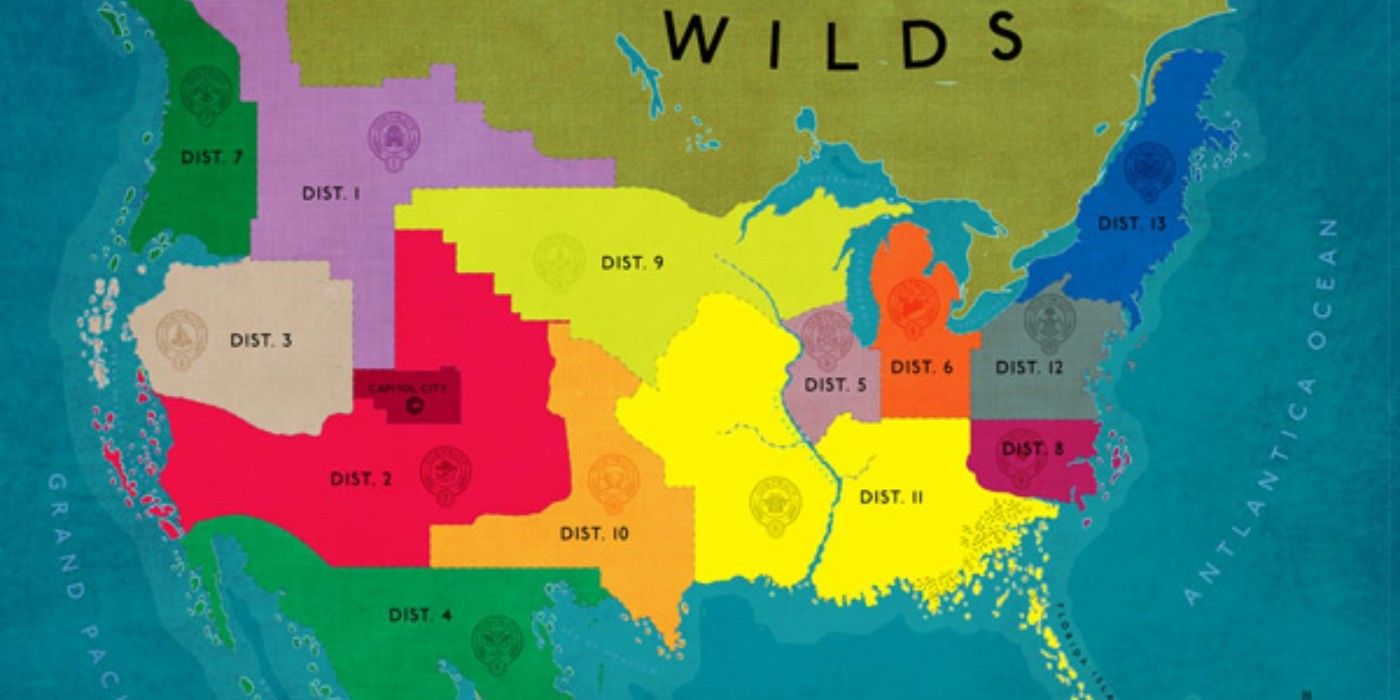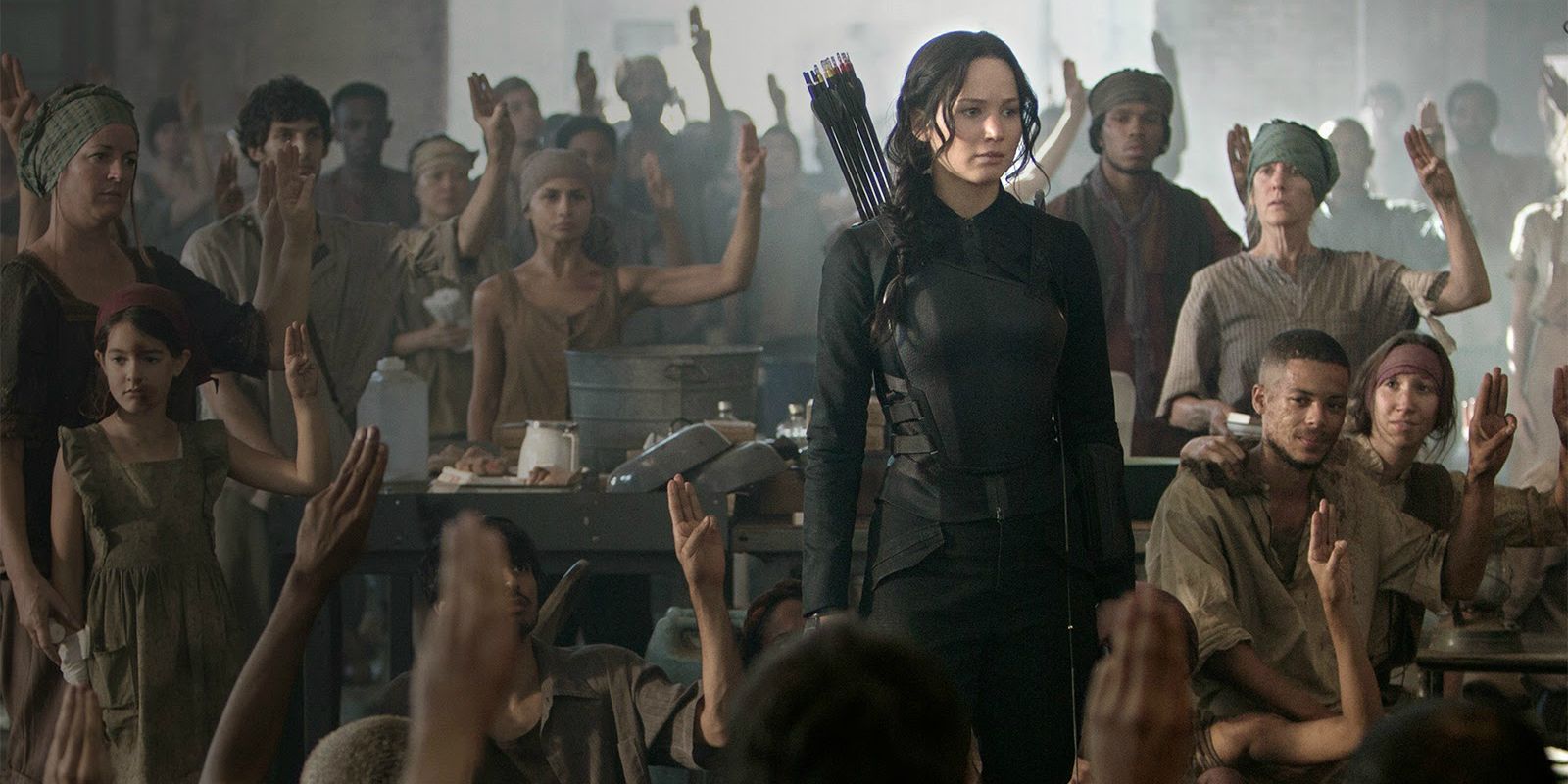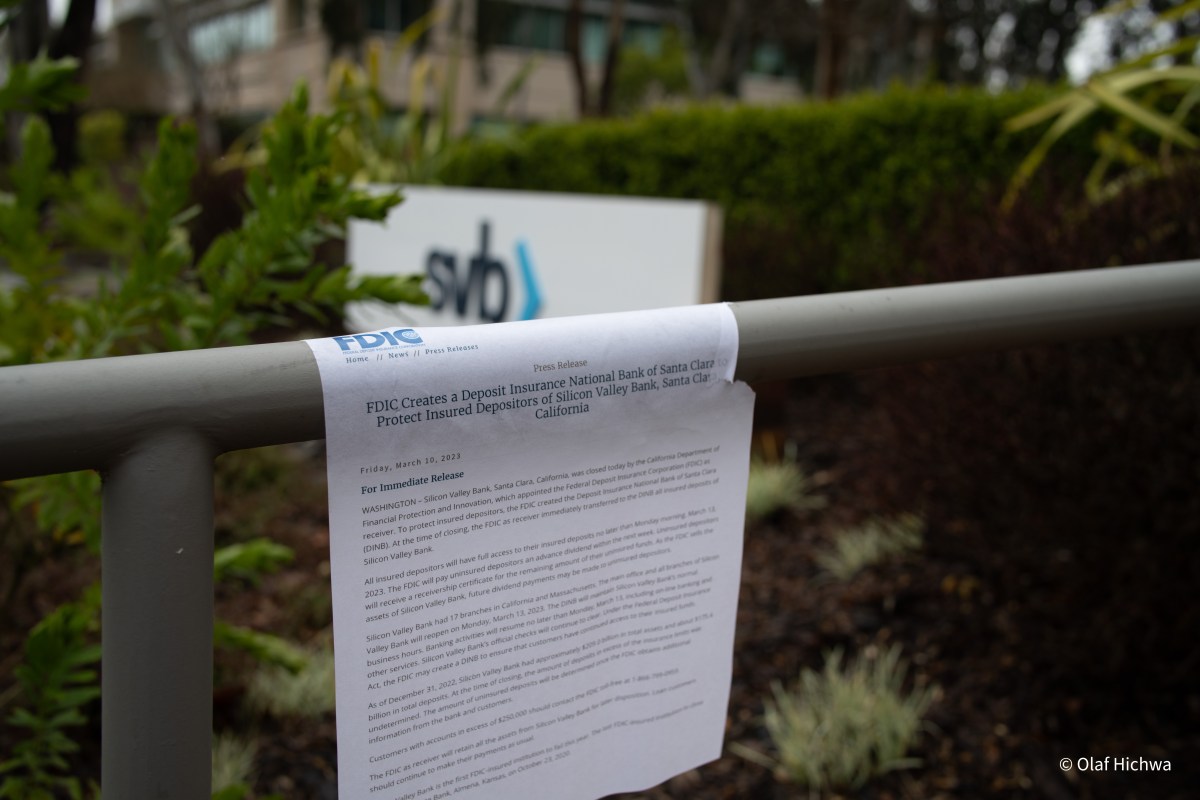With a Hunger Games prequel novel from author Suzanne Collins, The Ballad of Songbirds and Snakes, now feels as good a time as any to revisit Panem and get reacquainted with the Panem map and its 13 Districts. Covering those parts of what used to be the United States that haven’t fallen victim to rising sea levels and other global disasters, Panem is presented as a grim alternate vision of the U.S.’s future.
Most of the details fans get about the Districts in the Hunger Games franchise come courtesy of Katniss Everdeen. Katniss never draws the audience a Hunger Games Districts Map, but her memories of what she’s learned from news, school, and rumors of the world outside her own District 12 of Panem help to paint a picture. When Katniss Everdeen actually begins her Hunger Games training, she gets a crash course in what the other District tributes specialize in, and why they do. Because everything is from Katniss’ point of view, however, there are some gaps in the knowledge of other Districts and the world outside Panem.
Hunger Games’ Panem Explained
Panem rose up out of the ashes of a variety of unspecified natural disasters and wars sometime in the 21st century. The 13 Districts of Panem are, for the most part, disconnected from one another, with each district developing its own culture and social norms. Residents rarely travel between Districts, making for a more isolated way of living across the nation. Located in the former U.S., Panem (named after the Latin panem et circenses, or, “bread and circuses”) is governed by the totalitarian ruler President Snow, who deploys a military force known as Peacekeepers to keep residents in compliance with the nation’s laws.
Many district maps have been made of Panem over the years, created from descriptions in Collins’ Hunger Games books and the Hunger Games movie franchise. Most of Panem’s coastlines have disappeared thanks to possible global warming-related disasters, including rising sea levels. What remains are 13 districts (12 of them functional and participating in the Games) and The Capitol.
The Capitol
The Capitol is the hub of Panem, located in or near what was once Colorado. With a pre-Rebellion population of 96,463, the Capitol was the eighth most populated location in Panem. The Capitol was the seat of power for approximately 80 years, serving as home to Panem’s President Snow and his cabinet, all of them Capitol residents. The Capitol itself has no industry but is a technologically-advanced city full of citizens who luxuriate in their status and display it with frivolous fashions and other forms of outrageous displays of wealth and power.
The Capitol’s relationship with the rest of Panem’s districts could be characterized as quietly acrimonious, with the Capitol greedily taking from Panem’s citizens with little regard for their well-being. The Capitol specializes in utilizing Peacekeepers, propaganda, and brute force to keep Panem’s citizens in line. Among the more well-known citizens of the Capitol are Effie Trinket, Plutarch Heavensbee, and of course, President Snow.
District 1
Located in what was once Montana, Wyoming, and Idaho according to Hunger Games District maps, District 1 is the closest district to The Capitol and is responsible for manufacturing the luxury goods supplied to Panem’s biggest city. Before the Second Rebellion that began in the 75th Hunger Games, District 1 had 82 factories open and manufacturing goods daily and boasted a population of 24,315, making it the ninth-largest district in Panem.
Like Districts 2 and 4, District 1 is known for producing Career Tributes. Among the most well-known of the District 1 Hunger Games victors are Augustus Braun, victor of the 67th Hunger Games; 74th Hunger Games tributes Glimmer and Marvel; and 75th Hungers Games tributes and past victors Cashmere and Gloss. Despite its favorable relationship with and proximity to The Capitol, District 1 was one of the first districts to engage in open rebellion.
District 2
District 2, one of the wealthiest districts in Panem, is as well-known for its masonry industry as it is for its high rate of Peacekeeper recruitment and training of the powerful Career Tributes for the Hunger Games. District 2 is located in the Rocky Mountains of Colorado, making it a prime location for its 7 quarries. The district’s population pre-Second Rebellion was approximately 231,354.
The culture of being a Career Tribute is prevalent in District 2, and it’s considered an honor to volunteer and compete in the Hunger Games. Among the most famous residents of District 2 are the bloodthirsty tributes from the 74th Hunger Games, Cato and Clove (killed late in the game), and previous victors Brutus and Enobaria, who returned for the 75th Hunger Games.
District 3
One of the first districts to rebel against the Capitol was District 3. Among the district’s most famous residents are Beetee and Wiress, the victors of different Hunger Games. Both Beetee and Wiress were killed in the 75th Hunger Games. Known for its production of electronics (primarily televisions and computers), Panem’s District 3 was located in parts of what was once California, Oregon, Utah, and Wyoming. The district was also one of the largest with a population of approximately 195,329.
Before the Dark Days, District 3 was one of the wealthiest districts in Panem but was crippled by the events of that time period. In the ensuing years, District 3 was fairly wealthy, but the citizens lived modestly in a district populated with factories to produce electronics.
District 4
District 4, encompassing what was once southern California, parts of Texas, and quite possibly coastal parts of Mexico according to Hunger Games maps of Panem, was known for its fishing industry. Among the most well-known of the District 4 residents are Mags Flanagan, victor of the 11th Hunger Games and participant in the 75th Hunger Games; Finnick Odair, victor of the 65th Hunger Games and participant in the 75th Hunger Games, who’s known for his use of a trident as a weapon, and Annie Cresta, the 70th Hunger Games winner and wife of Finnick.
District 4 is believed to be the fourth-richest district with a population of 111,453. It’s also believed District 4, a crucial district to Panem, was one of the first districts to rebel against the Capitol. The daily lives of the District 4 residents are unknown, although it’s been confirmed their diets consist mostly of fish and salty bread tinted green from the addition of seaweed. Although frowned upon, District 4 is known for producing Career Tributes, citizens raised to volunteer to be tributes in the Hunger Games, and spending much of their young lives training to be victors.
District 5
District 5 is the district responsible for supplying power to the entirety of Panem. Because of the huge responsibility put upon the district to act as the source of an entire nation’s electricity, there is a hydroelectric dam in the district later targeted by Katniss and the rebellion. There’s no consensus on the location of District 5, but a variety of maps (including the one pictured above) approximate it to be located in the northern U.S., possibly drawing its water from the Great Lakes. The district’s population sits at approximately 134,345, making it the fifth-largest district in Panem.
Among the district’s most famous residents is Foxface. Fans have theorized that Hunger Games tribute Foxface purposely ate poisoned berries in the arena to end her time in the 74th Hunger Games. Another victor, Porter Millicent Tripp, of the 38th Hunger Games received a spinal injury so severe during the games she had to wear a head brace for the rest of her life.
District 6
Covering parts of what was once Michigan and Illinois in the Hunger Games map, District 6 is known for its production of transportation vehicles. District 6’s population is reportedly 784,453, making it the second-largest district in Panem after District 2. The goods made in this district include hovercrafts, high-speed trains, cargo trains, and the like.
There’s a widespread problem with morphling (a Panem painkiller and sedative which produces hallucinatory effects) abuse. Katniss witnesses the effects of morphling addiction firsthand with the male and female District 6 victors who return for the 75th Hunger Games and spend much of their training time painting one another (ostensibly to camouflage themselves in the arena) rather than train with actual weapons. Among the more infamous Hunger Games tributes is District 6’s Titus, who participated in an unspecified Hunger Games but was remembered for his cannibalism of the other tributes and being killed in an avalanche.
District 7
District 7 is located in the former Pacific Northwest and, more specifically, what was once Washington state. Given its strategic location, District 7 is responsible for the production and shipment of lumber and paper throughout Panem. Johanna Mason is the most famous District 7 resident, having won the 71st Hunger Games and survived the 75th Hungers Games. She went on to serve with Katniss in the Second Rebellion.
Citizens of District 7 are known to be particularly skilled with axes and Johanna was evidence of this regional skill, using axes during both of her Hunger Games runs and during the rebellion. District 7 notably detonated landmines and killed a large group of Peacekeepers while the 75th Hunger Games were going on, signaling to the Capitol the district was joining others in a rebellion against its repressive rule.
District 8
A smaller district covering what was once South Carolina on the Hunger Games district map, District 8 is responsible for the production of all textiles in Panem. It doesn’t make many appearances in the Hunger Games franchise. The district specializes in making uniforms for the Peacekeepers of Panem. The district was the first to rebel between Katniss and Peeta’s Victory Tour for the 74th Hunger Games and the Second Rebellion.
Katniss observed during the Victory Tour that District 8 was a grimy, industrial district, with nary a blade of grass in sight and the district’s residents living in dirty, cramped tenements. District 8 residents Cecelia and Wolf are the district’s most well-known Hunger Games victors, although both died in the first days of the 75th Hunger Games.
District 9
District 9 is a bit of an enigma in both the Hunger Games books and films. Its industry is grain and the district encompasses parts of Wisconsin, Iowa, North Dakota, South Dakota, Nebraska, and Minnesota. District 9 is one of the largest districts with a population of approximately 15,436, but it is also one of the poorest districts in Panem. There are no named District 9 tributes, victors, or residents in the Hunger Games books or films, but it’s believed the victors of District 9 helped Katniss and Peeta escape the 75th Hunger Games arena.
District 10
Not too much is known about District 10. What has been confirmed is District 10 is one of the smaller districts operating in the former American Southwest, including parts of Texas, New Mexico, and Arizona. The district’s primary industry is livestock. District 10 has never fared well in the Hunger Games, with no victors emerging during Katniss’s lifetime and the tributes from the 74th and 75th Hunger Games getting killed very early on. One refugee from District 10, Dalton, managed to find a safe haven in District 13 a few years before the Second Rebellion.
District 11
District 11 was home to Hunger Games tributes Rue and Thresh as well as victors Seeder, Chaff, and an unknown third victor. Located on the Hunger Games district map in what was once the southeast of the U.S. (Florida, Georgia, Mississippi, and Louisiana), as well as parts of the Ozarks, Oklahoma, and Kansas, District 11 was primarily an agricultural district. The residents of District 11 were responsible for supplying all of Panem with cotton and grain.
In spite of the abundance of resources grown and shipped across Panem coming from District 11, the Peacekeepers were notoriously strict in the district, leading to citizens who were impoverished and malnourished. The way District 11 is treated by the Peacekeepers and the government after Rue’s death leads to their rebellion in Hunger Games: Catching Fire.
District 12
District 12 is located approximately in the northern Appalachian mountain region in the former Eastern United States. With a population of approximately 8,000, the district is impoverished with many locals forced to hunt for their food, make their own clothes, and live on scraps from the Capitol. District 12’s primary industry is coal mining, which makes sense considering the district encompassed what was once West Virginia, Pennsylvania, Virginia, and Maryland.
Among the most famous of District 12’s residents are rebels like Gale Hawthorne, Katniss’s close friend who becomes a renowned figure for his role in the Second Rebellion. There are the victors, Katniss Everdeen, Peeta Mellark, and their Hunger Games mentor Haymitch Abernathy. District 12 was bombed after the 75th Hunger Games, which saw Katniss and Peeta break the rules of the games and destroy the arena. The destruction of District 12 was The Capitol’s act of retaliation against Katniss and Peeta. District 12 managed to rebuild and grew stronger throughout the Second Rebellion. After the rebellion, District 12 changed industries, switching from coal mining to the production of medicines.
District 13
Before the Capitol struck it down during the Dark Days, District 13 was known primarily for its manufacturing of nuclear weapons. It is interesting nuclear weaponry was District 13’s main industry when the district is located roughly where Maine, New Hampshire, Vermont, and Massachusetts once were on the Hunger Games district maps; those states have never been known for nuclear weapons production. Katniss knew little about District 13, but believed graphite mining was also a big industry.
As revealed in Catching Fire and Mockingjay, District 13 was inhabited before and leading up to the Second Rebellion, led by Katniss. In Catching Fire, District 8 refugees Bonnie and Twill correctly theorized District 13 was still inhabited, and the people had taken refuge in underground bunkers. It’s revealed in Mockingjay District 13 signed a non-aggression pact with The Capitol and remained politically independent of the rest of Panem for decades. District 13 threatened The Capitol with nuclear war should The Capitol’s government ever interfere with the district. As such, District 13 quietly carried on, never submitting a tribute to the Hunger Games.
The Wilds
The Wilds are located where Canada once was. Not much is known about the world outside Panem in the Hunger Games, unlike other dystopian worlds like the nation of Gilead in Hulu’s The Handmaid’s Tale where other countries do still exist around the world and are inhabited. It’s implied through Katniss’s own memories in the Hunger Games novels that other countries were flooded by rising sea levels. However, it’s unclear which countries were affected and which countries remain inhabited. Looking at the Panem map of the districts, it feels safe to say much of Canada has been wiped out or reclaimed by nature.
The Ballad Of Songbirds And Snakes Expands The World Outside Panem
The prequel novel to the Hunger Games trilogy, also adapted for the screen by Lionsgate and starring Rachel Zegler, is The Ballad Of Songbirds And Snakes. It’s the first explicit mention of the world existing, or at the very least, still being survivable, outside the districts that make up Panem’s map for the Hunger Games. There is mention in the novel of the Covey, a group of traveling performers who travel in and out of the districts of Panem. If they’re traveling out of the districts, some of the world outside must be survivable, and perhaps, there are still small towns in the Wilds that make up present-day Canada.
Lucy Gray Baird (Zegler) even escapes Panem in the novel. While what happens to her after her escape remains ambiguous, she does leave Panem completely. She’s the only character in the franchise to do so. In Katniss’ day, the few people she knew of that left District 12 were refugees in District 13. Lucy’s family, however, are descendants of Covey that settled in District 12, meaning she has, at the very least, some passed-down knowledge of the world outside Panem. Further novels or movies could expand the Hunger Games outside Panem even more.












































































